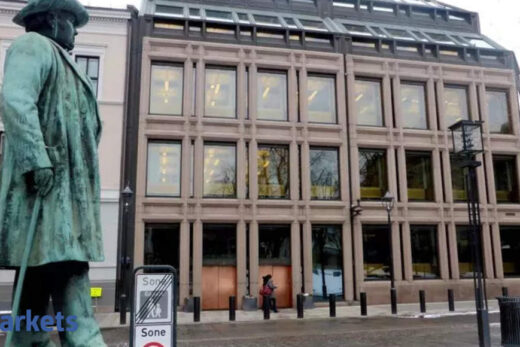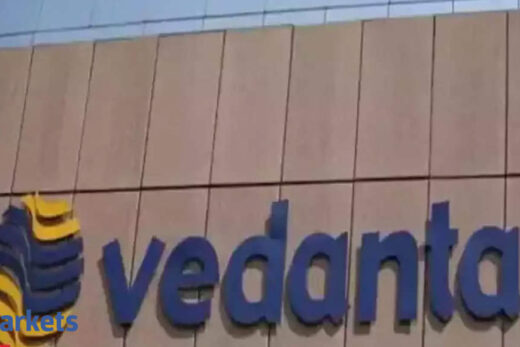You have released a very interesting digital report. You have introduced a potential India tech market word — POWRZ. What are your thoughts on those five-seven POWRZ companies?
The perspective is very simple. All of us agree and believe that the digital economy is going to scale up in India and is here to stay. The point is we are still at a very early stage of evolution, especially in the public markets. We felt that this was a stage where the entire future perspective needed an identity — I call it the digital identity for India — and we decided to give it an acronym — POWRZs which represents the emerging areas in the new economy and the world and also represents some of the companies which are potentially getting listed in the next 12 to 18 months.
P represents Paytm, which represents fintech in general; O is for Ola which includes cabs as well as electric business of theirs; W is Walmart is representation of Flipkart; R is Reliance, Z is Zomato and S represents Swiggy as well as Byju’s because it ends with apostrophe S. One thing I want to highlight is a caveat, that this is not really a call on these companies. This was primarily to represent to the world that India will eventually have its own FAANG; it is just a matter of time.
Number two we do believe that as companies emerge and as these spaces evolve, there will be a shuffling in terms of leadership in each of these and the market itself. So the acronym itself would evolve but, at this stage, we wanted to have at least one such representation.
You have also done some analysis on Nifty50 and how the sector rotation has been happening right from the 1990s. Can you just take us through how every 10-15 years, you see a massive shift as far as weightage or higher weightage on Nifty is concerned?
Yes, the main perspective here was that we were trying to define the digital economies’ relevance in terms of market cap 10-years later and we were basically saying this new sector getting created would potentially have at least a 20% plus impact in terms of index mix in 2030. Now the context was that from 1995 onwards until now, there has been several changes in sector leadership from time to time.
There are certain cases where you tend to see new sectors emerge and sustain the scale. IT services are a classic example. In 1995, it was not present in the index and exactly a decade later, it was 20% of the index. I do not think anybody would have thought in 1995 that IT would have such a large mix of the index a decade later. It is interesting that post that, it still continue to have a mid teen sort of a mix in the index and that is primarily because it has seen a secular sort of a growth. But having said that, from period to period, which is a five or 10 years period, we see what has actually seen a lot of changes. For example, energy and utilities became relevant in 2005 while industrials became relevant in 2010.
There was a fairly large scale up out there but both have seen a significant shrinkage in terms of the overall index mix. Similarly, in the case of pharma, in 2010 there was a big jump and thereafter a scale down. The point is that in longer periods of time — five or 10 years — there are two main drivers; one is cyclicality within end markets which could be macro led or specific bottom up sector related drivers which lead to a scale up in those sectors. Number two is that primarily there is potential for secular growth sectors to emerge from time to time. This is not really an easy task but they do emerge for investors beyond the day-to-day investment views that we would take.
We would want to be in a position to identify some of these broader emerging trends and participate in those as early as possible and that provides significant multi bagger opportunities.
When we talk about the digital age technology pack, do you think it is just the beginning of people being allowed to participate in this big theme that is growing fast?
We are still in a fairly early stage. There have been just a few listings. We would see listings accelerate over the next two-three years. One thing to definitely observe is that one cannot fight against the view that liquidity has had a significant role to play in bringing forward these listings. A lot of these companies would have eventually listed, but in a couple of year’s time frame. Their listings are getting preponed largely because the public markets are offering a relatively better valuation paradigm than what private markets can offer.
So that is a reason we are going to see a flurry of companies getting listed which is in some way, good for the public markets as well.
The Zomato market cap Rs 1 lakh crore after listing. Do you think one has to be very selective and that unlike manufacturing businesses, it may be a winner takes all segment. One has to be very careful that the success rate could be as difficult as what some of the valuations are factoring in?
That is a very valid question. The valuation metrics that we use for the economy tend to be very tricky. Now to give a context, where some of these stocks trade today does not really surprise me because the way it works globally as well is that in emerging markets, we tend to see relatively higher valuations for new economies. This is primarily if we look at the stock from an ASEAN or LATAM perspective, even if they are listed in the US.
If they are exposed to those end markets, one tends to see relatively higher valuations than stocks which are exposed to say the US or China. Now what is our primary perspective for the driver behind it? Firstly, the emerging markets (EM) and India in particular is at a fairly early stage of scale up. People believe there is a longer headroom for growth.
Secondly, since the entire tech end markets have not fully evolved, there is also this expectation of option value, where one of these companies which is successful in one end market could potentially attach adjacencies or new offerings. Now that is easier said than done. It is not an easy task moving from one end market to another end and there have been a lot of failures over the last seven-eight years in that respect.
Nevertheless, the market does give an option value as well and that is why we tend to see relatively larger valuations for emerging market companies including what we are seeing in India today. But how it is going to change is the most important thing. The perspective is that we are going to see a lot of listings over the next couple of years.
Somewhere down the line, investors will have a choice in terms of picking and choosing which companies they believe are going to scale up disproportionately in the long term. One cannot have five companies in each end markets getting up disproportionately. It will be one or a maximum of two. So, over the next decade, six-seven or eight companies at most could give proportionate value creation irrespective of what valuation you get in today. That is a task which might be too early to take a call on at this juncture, but in the next two to three years, we all need to identify those companies and stick with them.



